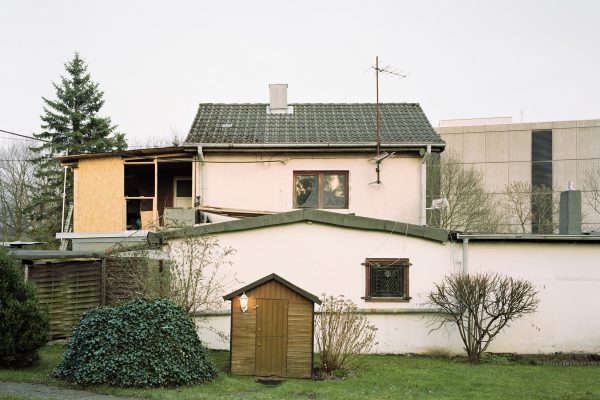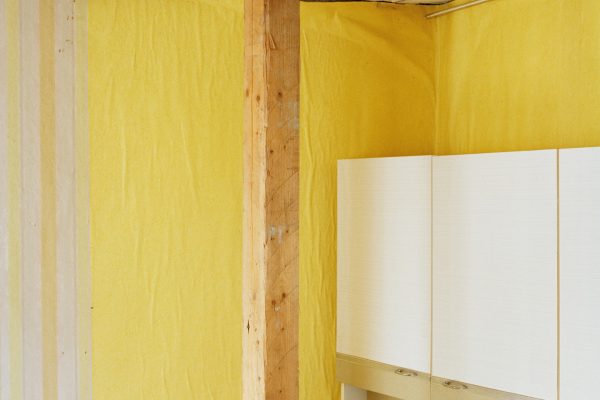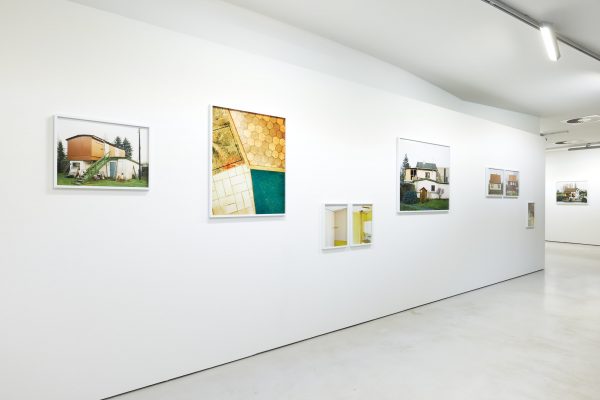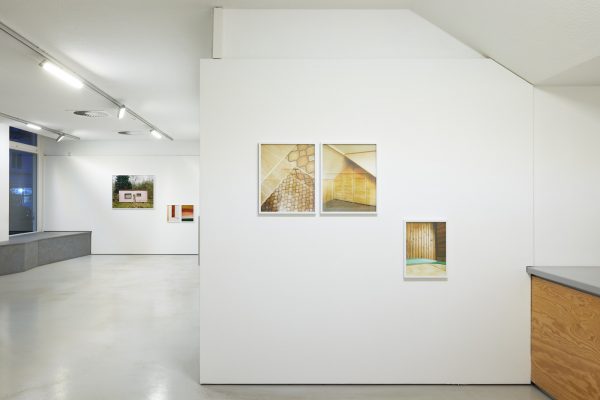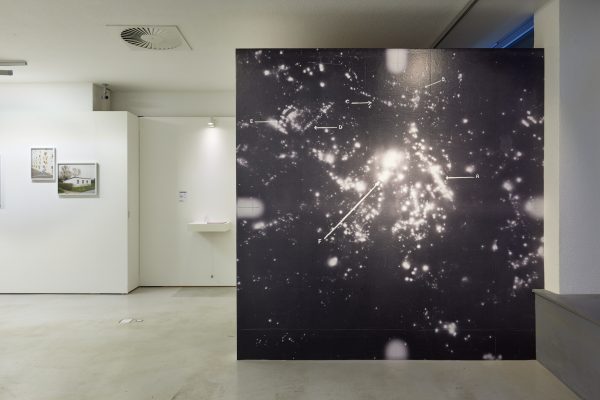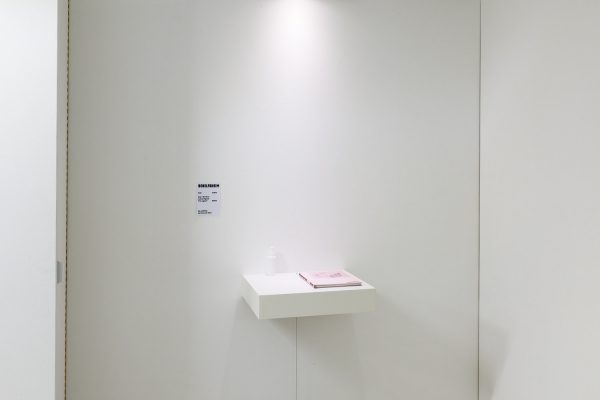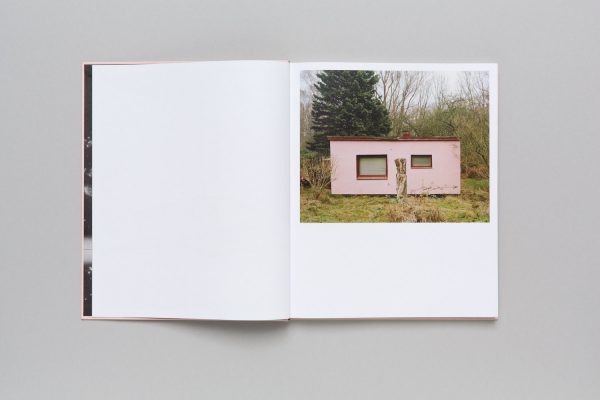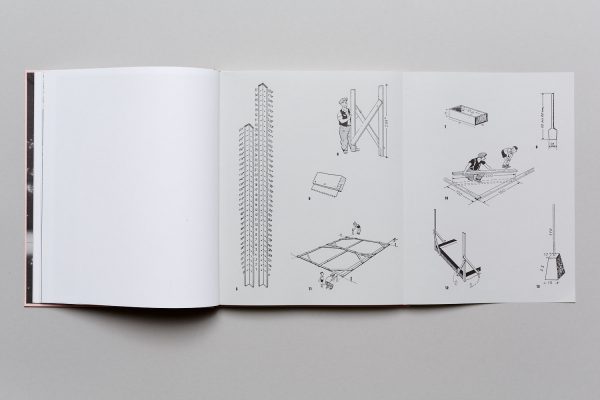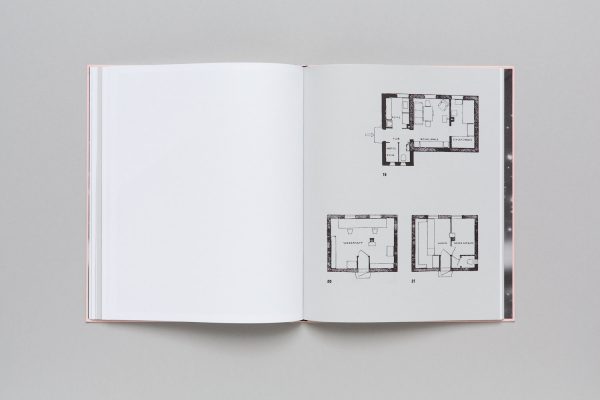Abstract of the accomplished photographic work
BEHELFSHEIM
During and shortly after the Second World War, hundreds of thousands makeshift homes (Behelfsheime) were set up in the destroyed cities of Germany. Many of them were built amidst allotment gardens, as these areas had largely been spared from the bombing of the Allies. Constructed of debris or simplest building materials, most of these houses have since undergone a continuous structural and spatial upgrade.
The first inhabitants and their descendants were provided with a lifelong right to stay, but this form of living is no longer tolerated: Urban space is becoming scarce and the garden areas offer an opportunity for densification. After the inhabitants’ death or departure the houses are demolished or scaled down to the size of an allotment garden cottage.
The work deals with the inside and outside of the last remaining Behelfsheime. It combines artistic-documentary photographs with archival material and classifies the phenomenon in terms of architectural history. Hirsch and Meuser document a type of house and its materiality in which post-war history becomes visible and create the last possible documentation of a temporary arrangement that has survived to this day.
Installation shots
Description of the project you intend to pursue through the Prize
NIGHTFALL – The disappearance of darkness
At night, when the sky turns orange, when birds get lost and millions of insects die, sleepless city dwellers look up into the sky and they see: nothing.
As 99% of Europeans live under sky glow in light polluted areas, they are covered by a luminous fog.
“Light pollution“ – meaning nonstop nocturnal illumination – is a companion of industrialization, economic growth, the rising standard of living, but also of global population growth. The disappearance of darkness occurs especially in densely populated regions of industrialized nations as almost all of Europe. It is a side effect of nature’s conversion for residential, transport and commercial purposes. The consequence: a severe disruption of ecosystems, an increase of energy consumption, the harm of human health and a disconnection with the space around us.
The artistic-documentary photographic research “Nightfall“ will address this phenomenon from different angles: from Europe’s brightest cities to Dark Sky Parks, from night shift workers to archaeoastronomical monuments and eventually nocturnal darkness as a concept of cultural heritage.
Light pollution needs to be addressed now because, even though it can be instantly restrained, its consequences may not.
















